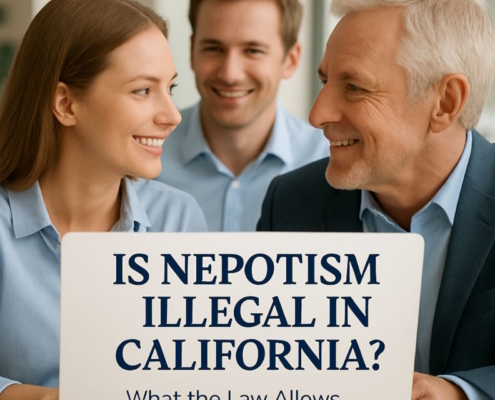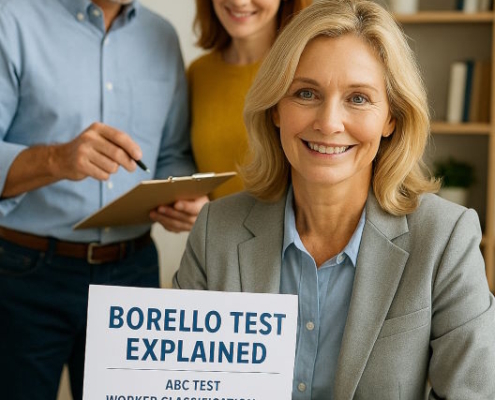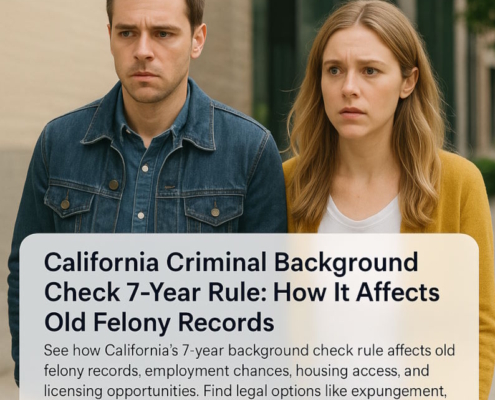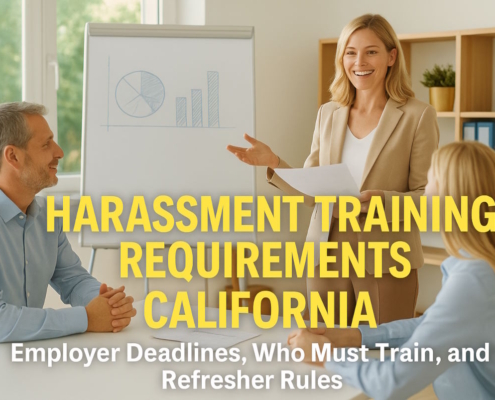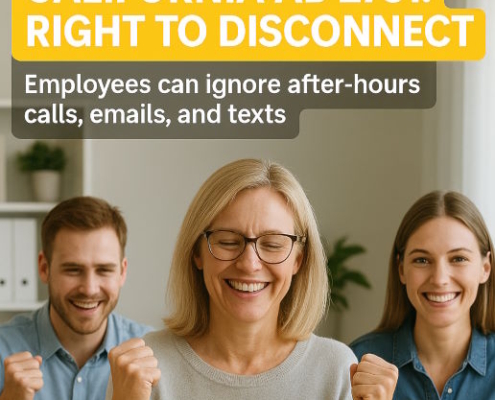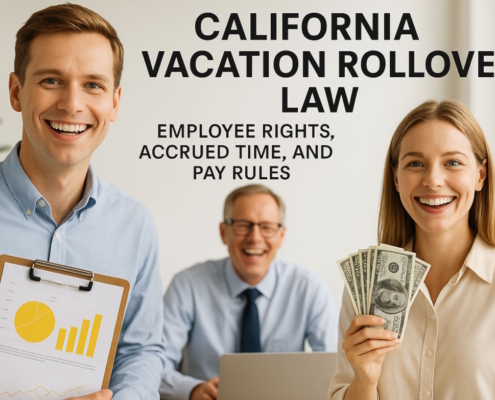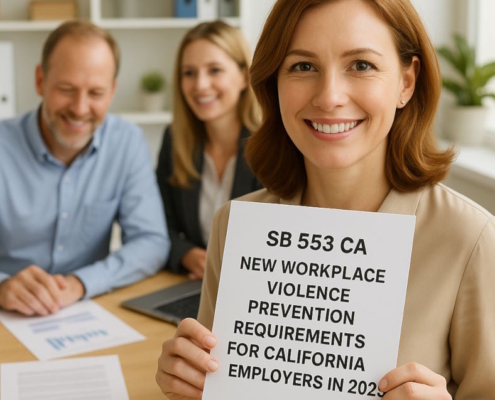Introduction
AB 5 (Assembly Bill 5), which was approved by California Governor Newsom, adds a number of clarifications and exceptions, including a special exception for registered architects, and modifies the criteria used to decide whether a worker is an independent contractor or an employee. The implementation of AB 5 began on 1st January 2020.
Dynamex Operations West v. Superior Court of LA, decided in April 2018, established an entirely novel three-part criterion to determine whether an individual is an independent contractor or an employee. In the past, courts classified workers based on a standard from an earlier case, which considered a number of characteristics. In the Dynamex case, the Supreme Court established a more straightforward “ABC” test with three components.
According to AB 5, the criteria are now applied to every clause in the California Labor & Unemployment Insurance Codes. If the hiring organization cannot demonstrate the following, California will assume that anyone supplying labor is an employee.
- Under the terms of the agreement and in reality, the individual is not subject to the hiring entity’s supervision or guidance when performing the work;
- The individual works outside of the hiring body’s regular business hours; and
- The individual is normally active in a business, trade, or occupation of the same kind that was independently formed and similar to the task being done.
The worker must be classified as an employee if the company is unable to prove all three ABC test prongs.
Employees from other states are exempt from AB 5. Only those working within California are governed by these labor regulations and must adhere to the ABC test in California.
Architects’ Specific Occupation Exception
According to the law, some professions are expressly exempt from the AB 5 ABC test. Notably, a person who is a working architect, lawyer, engineer, accountant, or private investigator and has an active California license is excluded. The previous Borello test would be used by an employer to decide whether to classify a licensed professional as an independent contractor or employee because AB 5 is not applicable.
The legislation regulating whether a company can have an independent contractor connection to another business was promptly altered on September 4, 2020, when Governor Gavin Newsom approved AB 2257 into statute to clear up any uncertainty in AB5. Because AB 2257 establishes a business-to-business exception to the Dynamex assessment, the Borello test is applicable.
Please remember that this exclusion only relates to licensed professionals and not to those who operate in the field in general.
The exception for business-to-business service providers
A solo professional with a limited liability company who works for a corporation full-time, exactly like an employee, will probably be considered an employee; the law views the notion that the two are distinct and independent business organizations as a charade designed to evade employment regulations. Thankfully, legitimate independent businesses are permitted to keep operating as independent contractors under the law.
A written agreement is necessary for the B2B service provider exception, and the business service provider must:
- Be a company, partnership, limited liability partnership, etc.
- Possess the appropriate licenses, if any are required;
- Be separate from the hiring organization;
- Function from a different place of business than the hiring organization;
- Maintain a customer base apart from the company that is hiring;
- Present itself to the public as an entity that can offer comparable services to others;
- Be independent of the hiring company’s direction & control;
- Determine its own prices;
- Supply its own equipment;
- Offer its services to the hiring company directly, rather than to the clients of the hiring company; and
- Not carry out tasks that call for a Contractors State License Board license.
In conclusion, an architectural firm can typically use the exception to employ a company that offers some of the more conventional independent contractor services, such as a sub-consultant design firm or a company that is exempted from AB 5.
Exception for Professional Services
The exception for “professional services” is the other significant exception to AB 5. For the purpose of this law, “professional services” are defined as marketing services that involve creative and original content, designing graphics, photography, fine art, human resource administration, and some other confined technical or artistic work under Labor Code Section 2750.3.
When people who offer professional services carry out the legally required tasks, they are excluded from AB 5 and:
- Keep a company address separate from the recruiting organization;
- Possess a business license along with any professional licenses or permissions that are necessary for them to operate in their line of work;
- Determine their own prices; manage their own schedules;
- Present themselves as capable of performing the same kind of work for someone else; and
- Possess judgment and discretion when providing the services.
The fact that the entity offering the professional service may be an individual distinguishes the professional services exemption from the business-to-business exemption. It is not necessary for the professional services to be rendered via a company organization. As the name implies, the business-to-business exemption necessitates that the service supplier be a business of a certain type.
Borello: Whenever the ABC Test isn’t Effective
In situations when AB 5 is not applicable, an employer uses the traditional Borello test to decide whether a person is an independent contractor or an employee. Compared to the ABC test in California, the Borello test is more subjective because it considers the partnership as a whole and evaluates the whole “economic reality.”
The most important element is whether or not the firm has the authority to regulate the worker, both in terms of the job that is done and how it is done. In essence, does the employer have control over the worker’s methods and procedures, or is the company just concerned with the end result?
- Whether the individual working is involved in a different line of business than the company;
- Whether the task is a regular element of the company’s operations;
- Whether the tools, equipment, and workspace are provided by the employer or the employee;
- The worker’s financial outlay for the tools or supplies needed to complete the task;
- The level of expertise needed for the specific job;
- The nature of the work, including whether it is typically carried out in the area by an expert, unsupervised, or under the control of the company;
- The employee’s potential for profit or loss based on their own managing abilities (bonuses are not included in the prospect of profit);
- The duration of the services to be rendered;
- The length of time the working relationship will last; the mode of remuneration;
- Whether it is time-based or job-based, or
- If the parties think they are establishing a relationship between an employer and employee.
One fact or factor alone does not automatically qualify someone as an employee under the Borello test. Rather, depending on the “economic reality” of their connection, all characteristics are compared and evaluated to decide whether a worker is an independent contractor or an employee. In contrast, the ABC test in California and the different AB 5 exclusions require the employer to prove each of the three test components in order to declare the employee an independent contractor. Here are some illustrations of how these tests relate to one another.
First scenario
A drafter is employed by an architectural firm to help with CAD drafting. Although the company has a drafter on staff, they require another person to handle temporary, excess work. For finished CAD files, the company hires a drafter and pays her. The drafter spends 20 to 30 hours per week freelancing for the company from home, typically finishing multiple CAD files. As long as her work fulfills deadlines, the drafter is allowed to choose her own times and schedule. The drafter works entirely for the company, is not running her own drafting enterprise, and doesn’t ask for work from other architects, even if the firm is not preventing her from doing so.
The ABC test in California is applicable in this case since the drafter is neither a licensed professional nor a corporation offering “professional services” defined by AB 5. The first question, A, asks whether or not the drafter is actually and contractually free from the company’s direction and control over how she performs her job. Since the drafter operates from home, establishes her own hours & schedule, and provides finished files without direct oversight or control, she is free from the hiring entity’s control and direction in this situation. She can also work with other architects.
The next component is B: Does the individual carry out tasks outside of the hiring entity’s regular business hours? The drafter works as part of the company’s operations. A common aspect of an architecture firm’s operations is drafting layouts and CAD files; the firm employs a drafter directly, confirming that drafting is a regular part of the firm’s operations. Under AB 5, this component alone makes the drafter an employee. Since a company must demonstrate that a worker satisfies all requirements in order to be classified as a non-employee, it makes no difference if the third requirement is fulfilled or not.
The third component, though, would probably also provide a different justification for the drafter’s employment. Element C inquires as to whether the individual is typically involved in a separately founded trade, profession, or enterprise of the same kind as the task being done. In this case, the drafter is not running a stand-alone company.
The drafter is solely employed by the company. Furthermore, she is not the proprietor of her own corporation, LLC, or drafting business; instead, she works directly with the company as an individual. It is unlikely that a court would conclude that she is involved in a business or trade that is independently founded.
The drafter is considered an employee of the company by the law since condition B cannot be satisfied, and element C is unlikely to be met. If the drafter files a claim alleging that the firm misclassified them as an independent contractor, the firm may be held accountable for unpaid overtime, skipped rest and meal breaks, wage & hour violations, and penalties for making false salary representations.
Second Scenario
An HR advisor is hired by an independent architecture firm to manage all of its HR requirements; he operates from home but occasionally visits the company’s office for meetings; he sets his own operating hours and has experience working as an HR consultant for several different small businesses; the firm pays him an hourly rate that has been raised every other year for the previous five years; and the consultant is licensed as a business.
Since the company can demonstrate that the HR consultant is providing a professional service, he is probably exempt from AB 5. He is fully licensed, operates from a different location, determines his own rates and hours, conducts trade with other businesses, and uses discretion & independent judgment in what he does. The consultant meets each of the six prerequisites for the “professional services” exemption to be applicable.
However, under AB 5, this simply establishes the consultant’s exemption from the ABC test in California. The Borello test must be the next step in the analysis. The consultant’s status as an independent contractor is likewise established by the Borello considerations. The consultant’s advice, not his methodology, is the firm’s main focus. In addition, the consultant is working from home and carrying out a specific task that is not part of the architectural company’s regular operations.
In addition, he works for other businesses and determines his own pricing and hours. A court will consider all applicable Borello criteria, and in this instance, there are many more reasons that lean in favor of determining the consultant as an independent contractor, even though the continued relationship may indicate the consultant is more akin to an employee.
Third Scenario
A licensed architect is hired by an architecture firm to help with overflow projects. Although the architect operates from home, the firm provides the laptop & software license. When creating designs and handling administrative duties, the architect must adhere to the policies and processes set forth by the firm. The architect was additionally urged to adhere to the company’s handbook. The architect’s hourly rate is determined by the company and provided on a “take it or leave it” approach; her request for a higher rate of pay was denied. For the past two years, the architect has been employed by the firm.
As a licensed architect, the registered architect in this case is not subject to the ABC test in California. To ascertain whether an architect is a self-employed worker or an employee, the law uses the Borello test.
An independent contractor connection is supported by the following elements: 1) both parties felt they were entering into a freelance relationship; 2) the professional operates from home; 3) the professional is free to work with different architecture firms; and 4) the architect posts an advertisement on her own website.
A working relationship is supported by the following facts: 1) the architect must adhere to the firm’s policies and procedures; 2) the architect was only employed by the company for a period of 2 years; 3) the architect is not actively advocating her services; 4) the professional is paid on an hourly basis at a rate set by the firm over which she has little control; 5) the architect uses tools provided by the company; 6) the architect possesses little chance of profit or loss due to her managerial skills because she merely completes whatever task the firm assigns her; and 7) the work is typical of the firm’s operations.
This is a more difficult issue, but given that the ABC test in California is not applicable, a court that weighs the Borello considerations is inclined to conclude that the architect qualifies as an employee. In addition to the final result, the firm also has concerns with the tools and techniques she uses, as well as her adherence to its policies and procedures.
According to the Borello analysis, the architect would be classified as an independent contractor if the company paid her a flat fee, allowing her to make money from her skillful work, she used her personal equipment, she did not follow the company’s procedures, and she worked with multiple other companies in addition to designing her own tasks directly for clients.
FAQs Regarding AB 5
1. What is the impact of AB 5 on consultants in the architectural industry (including MEP, structural, and civil engineers)?
AB 5 doesn’t apply to a California-licensed engineer who provides engineering-related services. Unless there are extraordinary conditions, an expert consultant contracted to work on a particular project will be considered an independent contractor pursuant to the Borello test.
2. What happens if my consultant—such as a cost estimator, plan expediter, or QA/QC specialist—is not a licensed professional?
A consultant may be excused from AB 5’s business-to-business requirements if they are not an accredited architect or engineer. However, applying AB 5 is the most secure choice if a consultant is unable to meet all the requirements of that exemption. The employer must next use the Borello test to ascertain whether the consultant is actually an independent contractor in light of the relationship’s economic realities if the business-to-business exclusion does apply.
3. As an architect with a license, I offer a variety of consulting services, such as meetings with public authorities, advocacy, and development facilitation. Only standard architectural services, such as creating a set of plans, are exempt from AB 5?
For licensed architects to be eligible for the AB 5 exemption, they must be “practicing” their trade. Although it is not clear how the courts will interpret that language, section 5500.1 of the California Business & Professions Code defines architecture as “professional services which need the abilities of an architect in the preparation of plans of sites, as well as the design, in entirety or part, of structures, or a collection of buildings and structures.” The expert assistance of an architect may also encompass “any or each of the following:
- Research, assessment, consulting, and guidance;
- Specifications, working drawings, designs, schematic & preliminary investigations, and planning;
- Coordinating technical and specialized consultants’ work; or
- Support with the governmental approval procedure and adherence to generally applicable norms and regulations.
Thus, an architect would probably be free from AB 5 if they were serving as a consultant or offering advice on general planning and development.
Additionally, the consultant can be eligible for the business-to-business exemptions as well.
4. Can I still bill for time spent if I don’t meet the requirements for an AB 5 exemption?
Indeed. AB 5 is merely a way to decide if a worker is an independent contractor or an employee. You have a right to payment if you work for an employer and they hire you (and vice versa). The employer remains responsible for paying the worker the agreed-upon amount if the person is determined to be an employee according to the AB 5 or the Borello test, but they may also be subject to extra payment and record-keeping requirements (such as for overtime compensation and additional employment benefits).
What Should I Do Next?
Employers are nonetheless responsible for evaluating each worker’s circumstances to see if they are a legitimate independent contractor, even though AB 5 aims to streamline the categorization question by implementing the simpler ABC test across the whole Labor Code. Good-faith errors are also made possible by the numerous exceptions. If in contradiction, there is a lower risk related to classifying a person as an employee at the onset, since it is important to keep in mind that the standard classification of a worker is that they have the status of employee, and the hiring body will have to demonstrate that exceptions exist.
When interpreting AB 5, courts will probably adopt a pro-employee posture and determine that the worker constitutes an employee in close cases. Concerns with recruiting organizations abusing employees and evading tax obligations were shared by legislators in AB 5 and by the judge in the Dynamex case, which introduced the ABC test in California. AB 5 makes it clear that its goal is to give millions of people the rights they were denied at work because they were misclassified.
The Court has established the ABC standard in the Dynamex case. The court determined that a cab driver should be considered an employee in Garcia v. Border Transportation Group because the employer was unable to prove element C in the ABC test. Although the employee was reliant on the employer to obtain a taxi permit and lacked the capacity to work independently, the employer didn’t prohibit or stop the employee from operating another business.
According to the Court, it is essential to find out if the employee decided to start their own business on their own and followed the standard procedures to do so. These include incorporation, licensing, advertising, regular offers to provide the services of the independently owned company to the general public or a number of prospective clients, and similar actions.
Applying AB 5 cautiously and conservatively is advised until the courts offer more clarification and direction regarding the correct application of the law & its exceptions. This is because of the potential obligation for back wages, the civil penalties of ten thousand dollars to twenty-five thousand dollars for every misclassified worker, and pro-employee courts.




